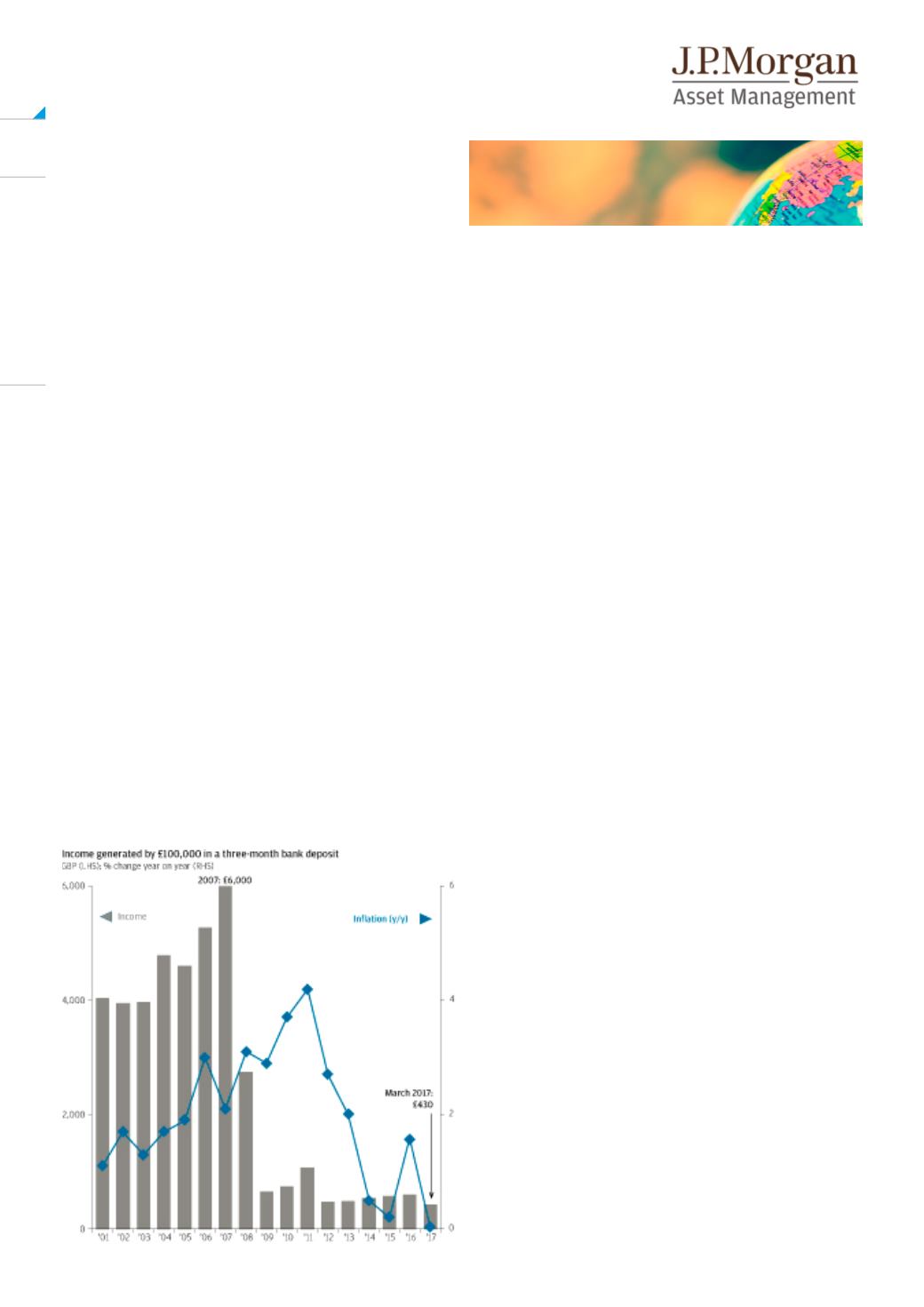
DIY Investor Magazine
|
June 2017
6
INVESTING FOR INCOME IN A
LOWER-FOR-LONGER WORLD
With interest rates close to record lows, investors
now need to cast the net wider than ever before in
their search for an attractive and sustainable level of
income. And investing in shares of investment trust
companies in order to receive enhanced dividends
can offer some compelling advantages for income-
seeking investors. We may now have entered a new era
of rate normalisation, but income remains a key factor
for investors around the world and will remain a major
component of total return for many portfolios.
Investments come with the power to generate a
reasonable income. They can also protect—or even
increase—capital value. Cash investments used to do
exactly that, back in the days of higher interest rates,
such as when the Bank of England held the base rate
at 4% or higher from February 2004 to October 2008.
But it’s getting harder for people to meet their income
needs from traditional investment sources, and that
includes cash. Parking savings in a bank account and
leaving them there, or investing in government bonds,
might seem like the “safe option”.
However, with income needs rising and interest rates so
low, keeping savings in a lower-risk investment like cash
could mean accepting an income that is much lower
than they need.
In fact, the chart below shows that investors that had
put £100,000 into a three-month bank deposit in 2000
would have made just £430 today.
Many forms of traditional fixed income have fared
little better, with gilts and UK corporate bonds barely
keeping up with consumer price inflation increases.
So if investors are planning on using that income to
reinvest for long-term growth, there is a real risk that
they will fall well behind their investment goals, forcing
them to take on more risk in the future to make up for
lost ground.
There’s no doubt that lower-risk investments, such
as government bonds and cash, still have their place
in income portfolios: after all, they can help to bring
greater stability over the longer term.
But in the current low interest rate environment, investors
in search of an income stream above the rate of inflation
need to move up the risk scale into higher-yielding
assets such as dividend-paying stocks.
ENHANCED DIVIDENDS HOLD AN INTUITIVE
APPEAL FOR INCOME INVESTORS
Dividend-paying stocks are providing an increasingly
popular way to generate a strong and sustainable
income. Dividends are linked to company earnings,
so they tend to keep up with inflation over time, while
dividend payers also tend to be large, financially stable
companies and so the income they produce can
be less vulnerable to economic cycles. Shares can
provide dividend income, but when company profits fall,
dividends may be at risk.
And many companies choose to reinvest profits for
future growth and share price gains, rather than pay
high dividends. Companies with a track record of paying
high dividends are not necessarily those with the best
potential for income growth in the future.


